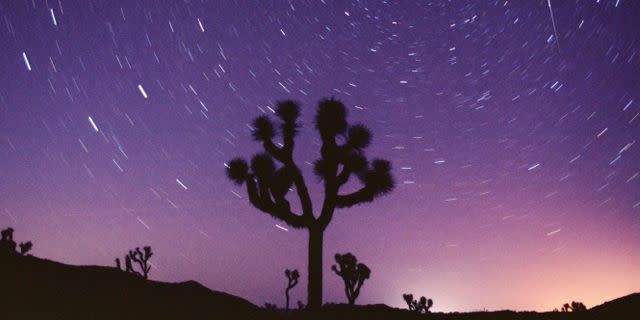Look Up! The Perseid Meteor Shower Is Happening This Weekend

Update, August 8: The Perseids are coming this weekend, but we're waiting too see whether the weather will play ball. According to Accuweather, the forecast for clear viewing of the meteor shower is a bit murky.
As of Wednesday, the weekend forecast calls for clearer skies in the upper Midwest. However, some clouds will dampen visibility in the South and the West, while the California wildfires will cause viewing problems out there.
Here's hoping you find a dark spot with clear skies. If you're interested in upping your stargazing game, check out our guide to binoculars and telescopes, as well as how to take professional-level photographs of the stars.
The Perseid meteor shower is one of the most popular showers among stargazers, and for good reason. The Perseids tends to be one of the brightest and most active meteor showers of the entire year.
Space.com reports the meteor shower will peak on the nights of August 11 and August 12. However, NASA meteor expert Bill Cooke recommends August 12 for a slightly better show.
"This year the moon will be near new moon, it will be a crescent, which means it will set before the Perseid show gets underway after midnight," Cooke also told Space.com. "The moon is very favorable for the Perseids this year, and that'll make the Perseids probably the best shower of 2018 for people who want to go out and view it."
A post shared by Lisa Kinnear (@bound_for_mountain) on Jul 31, 2018 at 11:21am PDT
During the showers, you can expect to see about 60 to 70 meteors per hour, which breaks down to about one meteor per minute. Planets like Mars and Saturn will also be visible during this time, until about 4 a.m. local time for the Red Planet and 2 a.m. local time for Saturn.
The Perseids get their name from the fact that they appear to come from the constellation Perseus. The shower is caused by the Earth running into the debris left behind by the comet Swift-Tuttle, which happens every August.
The last time Swift-Tuttle passed near Earth was in 1992. It's swing by again in 2126. Swift-Tuttle is so large that the Earth spends weeks inside the debris zone it left behind.
NASA recommends viewing a meteor shower from dark areas like suburbs or the countryside. It will take about 30 minutes for your eyes to adjust, and the longer you wait outside, the more meteors you'll see. Happy skywatching!
A post shared by Sharon Groenow ⚔ (@sharonrpi) on Jul 30, 2018 at 10:35pm PDT
PRE-ORDER NOW Delish Cookbook, barnesandnoble.com
('You Might Also Like',)

